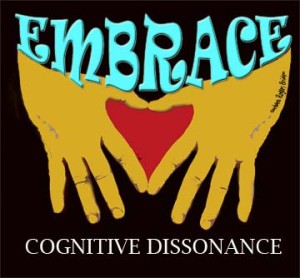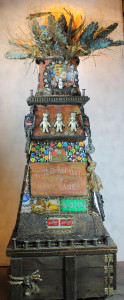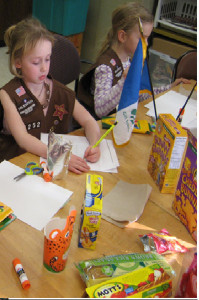-

Curriculum Repositories
Curriculum designed to reduce persecution of the marginalized and expand the worldview of all participants- including the teacher!!
As an online teacher for almost two decades, I found it such a loss when the Course was finished-all the developed curriculum was lost. I created what I call “Islands of Knowledge” . I create these Wiki’s so the students have ongoing access to the curriculum.
Authentic Marginalized Voices
Critical and Creative Thinking Lessons
Human Relations Metaphor Sculpture Lessons
Human Relations Lesson Plan Rubric
Human Relations Lessons
SPECTACULAR STUDENT SUBMISSIONS FROM MY YEARS AT BEMIDJI STATE UNIVERSITY
Bridges to Human Relations Student Testimony
_________________________________________________
-
Click to earn a stipend and free projects for beta testing CLIA in the classroom
Click here for your free CLIA project module. http://goclia.com
Cooperative Learning and Individual Assessment (CLIA), designed by Dr. Bridges, provides the accountability currently missing in the assessment of group work. This assessment tool provides the opportunity for the teacher to simply drop their class list into the software and students to be held accountable as they learn the real life skills necessary to work successfully in a group. The students will come to consensus, enjoy anonymous team member assessment on five different benchmarks and emerge without the group members experiencing ongoing social stress. Review categories are customizable. I use:
- Research/Data Collection
- Participation/Discussion
- Writer/End Product
- Facilitation/Collaboration
- Willingness to think out of the Box
- ______________________________________________________
-

Ode to Gluten encourages the viewers to consider the evolution of our collective memories and beliefs about wheat. And, interactive materials provided with the piece prompt a discussion on the power of General Mills’ icons such as the Jolly Green Giant and the Pillsbury Dough Boy and Kellogg’s Tony the Tiger. The next public appearance of Ode To Gluten will be April 4-22, 2014 at the Mill City Museum, 704 S 2nd St Minneapolis, MN 55401 but the dialogue starts here NOW. Click to the right and below to review the details on the next appearance of Ode to Gluten. Mill City Museum April 2014 1. Icon Design. April, 5, 2013 Grade K-6 Art stars design a new 21st century icon recognized by General Mills. 2. Family Day. April 12th , 2014. We are planning a family day for open dialogue and project making. I will lead the session and encourage participants to bring their own historical power objects. The families will create their own artworks which tell a story and ask questions! 3. Area Learning Center Public Art Project. Fall 2014. Social Action Installation.
Click below to review the 2013 Art-A-Whirl appearance events and the results of a survey completed by 350 people at that event. Raw data below: The Power of Cultural Icons and Legacy of Wheat in Minnesota
__________________________________________________________________________________________ 
How the Acadians became the Cajuns
This interactive 5-12 social studies curriculum focuses one Acadian family and their experience with the dispersal. The Franco-Americans who were expelled from Nova Scotia and exiled to Louisiana where they became the Cajuns. Click Here to Access Interactive Curriculum. Click Here to see Nova Scoitia Research Pictures Taken during the sabbatical research trip.
____________________________________________________________________________________________
Curriculum Repositories
As an online teacher for a decade, I found it such a loss when the Course was finsihed-all the developed curriculum was lost. I created what I call “Island of Knowledge” . The students’ final projects are generally lost to each other when an online class is finished. I create these Wiki’s so the students have ongoing access to the curriculum. Authentic Marginalized Voices Critical and Creative Thinking Lessons
___________________________________________________________________________  Action Research Project Results Question: Do Mexican students understand the global impact of their regional art, the importance of environmental awareness and the empowerment potential of English language proficiency? Secondary Question: Does understanding of one “other” culture inform ELL/ESL cultural curriculum development and delivery?
Action Research Project Results Question: Do Mexican students understand the global impact of their regional art, the importance of environmental awareness and the empowerment potential of English language proficiency? Secondary Question: Does understanding of one “other” culture inform ELL/ESL cultural curriculum development and delivery?
7th Grade class at Escuela en Boca de Tamatlan Are you interested in joining this project? drb@bridgescreate.com
____________________________________________________________________________________________
 Mask Making as Identity Exploration
Mask Making as Identity Exploration
Click here to view entire curriculum . When students incorporate their visual culture and ethnic culture iconography in their art making, this unit becomes especially powerful as a pathway to self actualization and reflection. Cultural reflection is the foundation for helping a student formulate an awareness of self identity. There is something seductive about the opportunity to change our identity. I have found students eager to create and use masks to role play, create and act out imaginings, students love to play with changing their identity. I believe masking encourages risk taking because you “become” someone or something else when you don the mask. Every art textbook has a mask lesson. What makes this one different?
My doctoral dissertation was a multi-methodological study that observed a control group (no cultural research) directed to “make a mask that tells something about yourself” and an experimental group following a unit similar to what you see here in this unit. The control group chose to express themselves in the simplest terms. I fondly came to call the control group “the ball heads” – which predominated. The experimental group produced varied and textual masking interpretations. Encouraging students to incorporate the iconography from their lifeworld will expand their options and development of self-identity.
____________________________________________________________________________
 Media and Manipulation
Media and Manipulation
A number of art educators are proposing that the field of art education should transition to a visual culture studies orientation. Such a move would continue to confirm the importance of teaching to the full breadth of visual images available to us” (Bolin, Blandy, 2003, p 246).
With obesity levels reaching over 37% in our school age children, (Lowry, Wechsler, Galuska, 2002) student understanding of the role that media, commercials, advertisement, and food product development plays in American culture has become increasingly powerful and important.
The visual imagery employed to sell food products is integral to the success of the product sales. This unit will also emphasize the power of the design principles of color, line, and shape when used in visual culture imagery the students connect to their everyday world. How often do you hear food being advertised on the radio?
Laura Chapman states it well, (2003) “The educational significance of the mass arts arises from their ubiquitous presence in our lives, and the central role of artistry and aesthetic persuasion in quests for profit from them. In my judgment, the forms of image-making and impression management within the mass arts are too rarely examined in ways that highlight their overall social, civic, and educational significance.”
This unit might also provide an opportunity for students to access cross-cultural data by connecting with a “companion site” via the internet. Are food marketing and product development strategies targeted at adolescents culturally specific? The unit, Media, Marketing and Manipulation, may also partially answer this question. UNIT Media and Manipulation
______________________________________________________________
 Click Image to view effective assessment strategies for online learners.
Click Image to view effective assessment strategies for online learners.
_________________________________________________________________________________
CONNECTIONS
Click Here and then Double Click for Project Description Influence Your World with the Power of Visual Culture  Collaborative Sculpture At Perpich Center for Arts Education ___________________________________________________________________________________________
Collaborative Sculpture At Perpich Center for Arts Education ___________________________________________________________________________________________  I have been traveling for 30 years looking at the origins of Mexican Masks. The history of each mask is the history-sometimes shocking but not usually surprising -for any country. Crizmac hired me to create these charts. No longer in print. Eight poster set published with Crizmac, Tucson, Arizona. Double Click for larger image ________________________________________________________________________________________
I have been traveling for 30 years looking at the origins of Mexican Masks. The history of each mask is the history-sometimes shocking but not usually surprising -for any country. Crizmac hired me to create these charts. No longer in print. Eight poster set published with Crizmac, Tucson, Arizona. Double Click for larger image ________________________________________________________________________________________  Creatures Cultures My visit to Cuba in 2002 was very enlightening. I was conducting research for a unit on the objects created during the “Especial Tiempo”, the Special Time, after the Soviet Union’s economic collapse. I met ( on the sly) with dissident artists who had staged a traveling extra-national exhibit which had been shut Take to the Air down by Castro’s regime. Click Here for the entire lesson Creatures Cultures Unit Plan 2012
Creatures Cultures My visit to Cuba in 2002 was very enlightening. I was conducting research for a unit on the objects created during the “Especial Tiempo”, the Special Time, after the Soviet Union’s economic collapse. I met ( on the sly) with dissident artists who had staged a traveling extra-national exhibit which had been shut Take to the Air down by Castro’s regime. Click Here for the entire lesson Creatures Cultures Unit Plan 2012
_____________________________________________________
